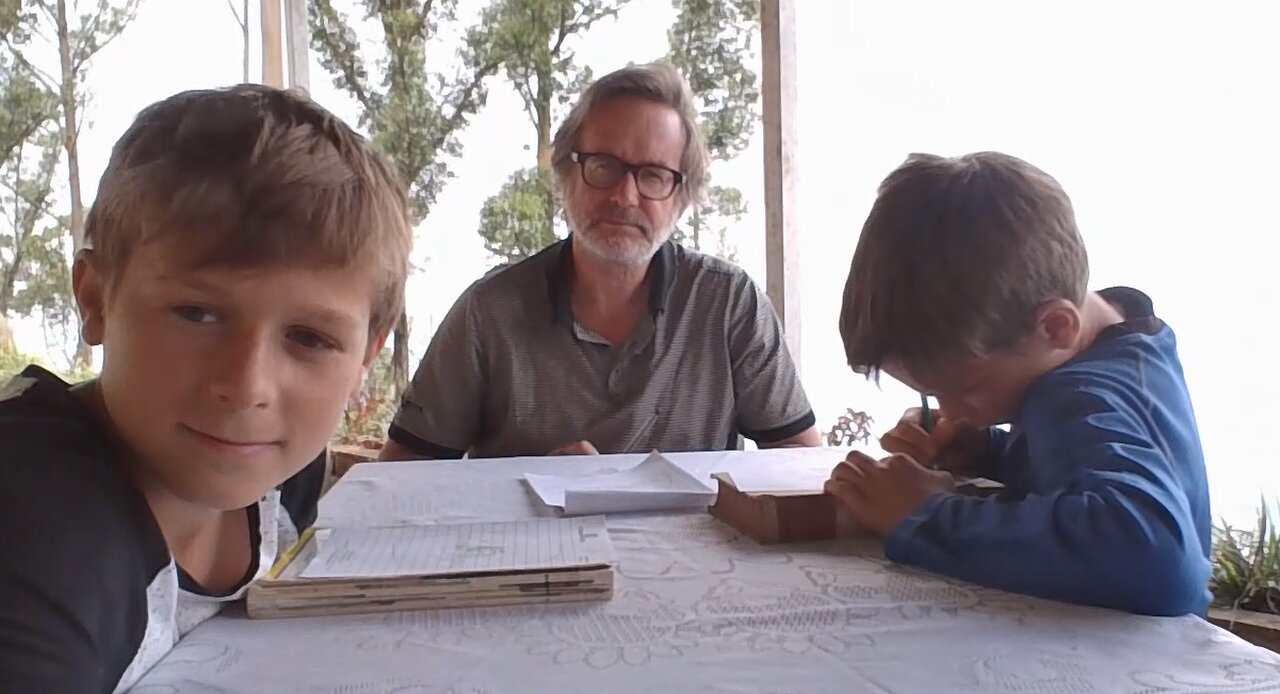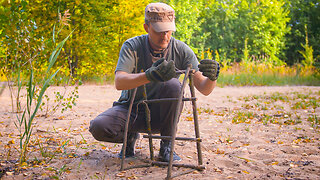Premium Only Content

The Cosmological Argument (with children), PART 2: Sets & Causes
In Part 2 we look at sets of things that have obvious causes (or explanations or parents) that are different to themselves.
e.g. wooden furniture requires trees, carpenters & carpentry tools. Babies require parents... etc..
So we continue with something that is conceptually simple for children. We don't use 'adult explanations' like 'finite objects are caused by other finite objects', instead we work through simple examples of this so that the children 'get' what we are talking about.
We also draw smaller circles within larger circles as this will help us to understand when we watch another video 'made for adults' where an important point is made in one version of the Cosmological Argument where *the* straw man argument routinely employed by atheists, is dealt with. That point is dealt with later but the set of things within another set of things (a circle within another circle) is introduced here so that later steps in the logic will be clearer for the children.
0 mins 0 seconds: Part 1 Recap
1m 23s: Part 2 Introduction
2m 5s: Discussion on possible examples
2m 58s: Wooden furniture & other ideas
3m 54s: Ideas adapted after suggestions from children
4m 8s: One of a number of comical moments
4m 50s: Living things
5m 40s: Inner and outer circles
6m 5s: BABOONS appear in the background during filming and this leads to a BABOON INVASION!
6m 26s: Children begin writing up their ideas & examples
7m 40s: Discussing the causes of.. and explanations for, the existence of things (finite things)
10m 8s: A brief summary of causes
10m 26s: A counter example? An uncaused monkey... Can a baby monkey just appear out of nothing?
11m 0s: Looking forward to the next parts of the argument(text on screen). Does what we have discussed apply to every finite thing (everything in the universe)? Was there a beginning? What would have to be different about the cause of the first thing? (Hint: not finite...)
Please join us for Part 3 and beyond. We have a fun participation activity that helps us to understand one (of many) arguments that explains why the past cannot be infinite and why there must have been a beginning.
-
 1:05:34
1:05:34
The Big Mig™
8 hours agoConfirmed Kash Patel New FBI Director, Bring On The Pain |EP483
21.1K13 -
 53:59
53:59
Tactical Advisor
4 hours agoThe Vault Room Podcast 009 | Everyone Getting $5000?!
23.9K6 -
 2:04:44
2:04:44
TheAlecLaceShow
15 hours agoLive at CPAC | Interviews with Dean Cain, Rep. Comer and more! | The Alec Lace Show
41.3K2 -
 LIVE
LIVE
Major League Fishing
2 days agoLIVE Tackle Warehouse Invitationals, Stop 1, Day 2
215 watching -
 3:12:37
3:12:37
I_Came_With_Fire_Podcast
12 hours agoNOC Spy: CIA uses SATANIC RITUAL ABUSE to make SLEEPER Cells
21.6K3 -
 28:42
28:42
CatfishedOnline
1 day ago $1.67 earnedWoman Insists Morgan Wallen Relationship Isn't a Romance Scam!
19.1K -
 16:25
16:25
TSPLY
1 day agoNew CNN / MSNBC Meltdown Moments Of Getting Mad At Donald Trump In February
24.5K18 -
 8:33
8:33
scoutthedoggie
5 hours agoAirsoft War Games Scotland
28.3K4 -
 4:56
4:56
Kirill MultitoolOfficial
1 day ago $3.35 earnedSurvival TIPS and usefull bushcraft DIY in the wild
43.9K3 -
 27:25
27:25
ArturRehi
1 day agoThis is How Dictatorships are Formed
23.7K5